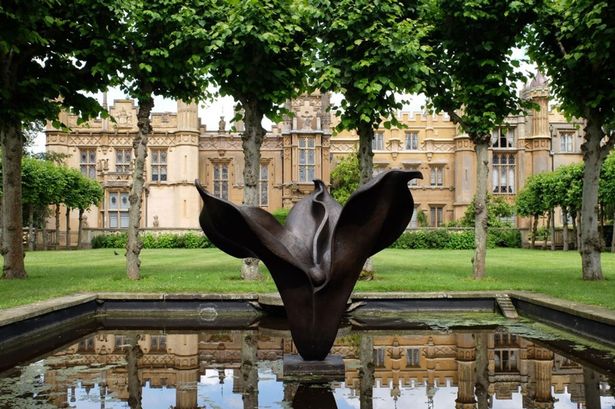The theft of “La Promesse,” a monumental bronze sculpture by artist Anne Curry, has sent shockwaves through the art world and left the artist devastated. The impressive piece, depicting two embracing figures reaching towards the sky, was stolen under cover of darkness, its substantial weight and size seemingly no deterrent to the audacious thieves. Valued at a potential sale price of £60,000, the sculpture represents not only a significant financial loss but also the culmination of Curry’s artistic vision and countless hours of painstaking labor. The theft underscores the vulnerability of outdoor art installations, despite their often-imposing scale, and raises questions about security measures and the challenges of protecting such valuable works in public spaces.
“La Promesse,” French for “The Promise,” held profound personal meaning for Curry, embodying themes of hope, connection, and the enduring power of human relationships. The sculpture’s intertwined figures symbolized the intertwining of lives and the shared journey of humanity, a message amplified by its placement in a public setting where it could be appreciated by a wide audience. The bronze material, chosen for its durability and timeless quality, was meant to ensure the sculpture’s longevity, allowing it to weather the elements and stand as a testament to the enduring nature of human connection. The theft, therefore, represents a profound violation not just of property, but of artistic expression and the artist’s intended message. The empty space where “La Promesse” once stood now serves as a stark reminder of the loss, both material and emotional.
The scale of the theft is particularly noteworthy. The bronze sculpture, several feet tall and weighing hundreds of pounds, would have required significant planning and resources to remove. This suggests a level of organization and premeditation that goes beyond opportunistic vandalism, pointing towards a potential targeted operation. The thieves likely employed specialized equipment and vehicles to transport the heavy artwork, raising concerns about the potential involvement of organized crime or individuals with expertise in art theft. The brazen nature of the crime, carried out despite the inherent difficulties of moving such a large and heavy object, highlights the audacity and determination of the perpetrators.
The incident has reignited discussions about the security of public art installations. While museums and galleries employ sophisticated security systems to protect their collections, outdoor artworks are inherently more vulnerable. Their public accessibility, while central to their purpose, also makes them easier targets for theft or vandalism. This incident raises questions about the effectiveness of existing security measures, including surveillance cameras, lighting, and physical barriers, and the need for enhanced protection strategies. The cost of implementing such measures can be significant, particularly for smaller communities or individual artists, creating a challenging dilemma between accessibility and security.
The theft of “La Promesse” also highlights the complexities of the art market and the challenges of recovering stolen artworks. The black market for stolen art is a lucrative and often shadowy realm, where stolen pieces can be sold to private collectors or trafficked across international borders. Recovering stolen art can be a long and arduous process, often involving law enforcement agencies, art recovery specialists, and international collaborations. The fact that “La Promesse” holds a significant monetary value increases the likelihood that it was stolen for resale, adding urgency to the efforts to locate and retrieve it.
Beyond the financial implications, the theft of “La Promesse” represents a significant loss for the artist and the community. For Anne Curry, the sculpture embodied years of creative exploration, technical skill, and personal investment. Its theft represents not only a financial setback but also a profound emotional blow, robbing her of the satisfaction of seeing her work appreciated by the public and the legacy it was intended to create. For the community, the loss of “La Promesse” deprives them of a cherished piece of public art that enriched their environment and fostered a sense of shared cultural experience. The empty space where the sculpture once stood serves as a poignant reminder of the vulnerability of art and the importance of protecting cultural heritage. The hope now rests on the successful recovery of “La Promesse” and its return to its rightful place, allowing its message of hope and connection to once again resonate with the public.














